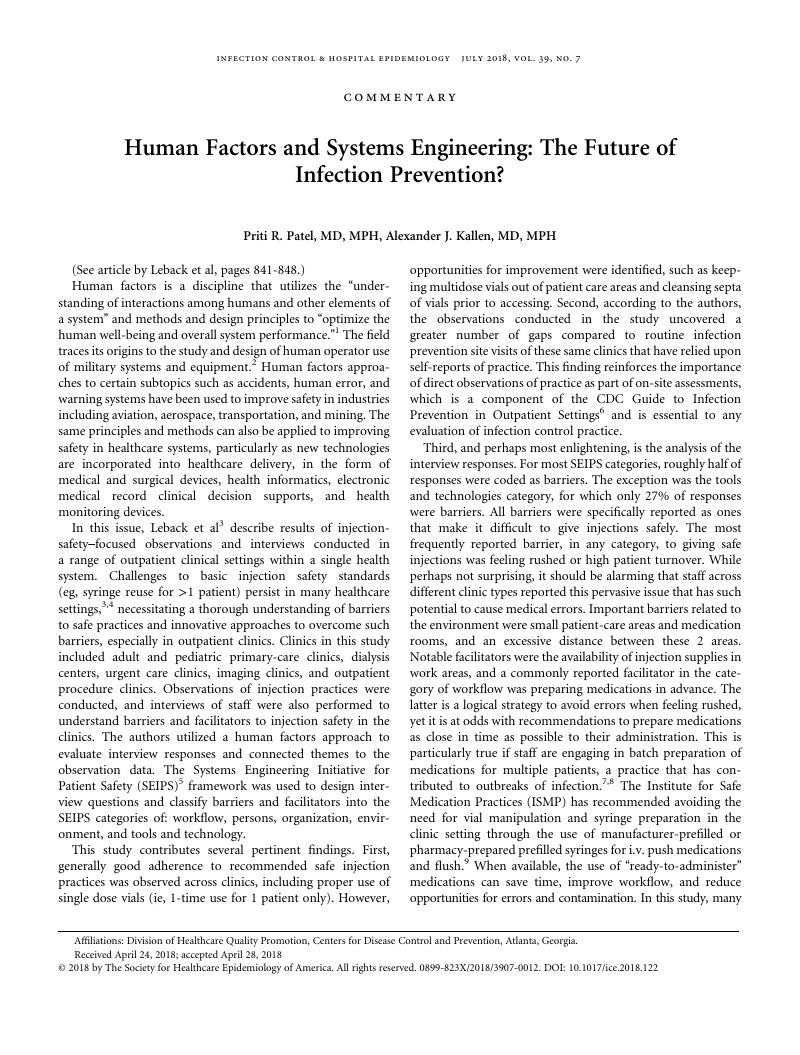Crossref Citations
This article has been cited by the following publications. This list is generated based on data provided by Crossref.
Musuuza, Jackson S.
Hundt, Ann Schoofs
Carayon, Pascale
Christensen, Karly
Ngam, Caitlyn
Haun, Nicholas
and
Safdar, Nasia
2019.
Implementation of a Clostridioides difficile prevention bundle: Understanding common, unique, and conflicting work system barriers and facilitators for subprocess design.
Infection Control & Hospital Epidemiology,
Vol. 40,
Issue. 8,
p.
880.
Wong, Leslie P.
2019.
Achieving dialysis safety: The critical role of higher‐functioning teams.
Seminars in Dialysis,
Vol. 32,
Issue. 3,
p.
266.
Katz, Morgan Jane
and
Gurses, Ayse P
2019.
Infection prevention in long-term care: re-evaluating the system using a human factors engineering approach.
Infection Control & Hospital Epidemiology,
Vol. 40,
Issue. 1,
p.
95.
Zhou, Qian
Liu, Junjie
Zheng, Feiyang
Wang, Qianning
Zhang, Xinping
Li, Hui
Tan, Li
and
Luo, Wanjun
2024.
Nurses’ preferences for interventions to improve infection prevention and control behaviors based on systems engineering initiative to patient safety model: a discrete choice experiment.
BMC Nursing,
Vol. 23,
Issue. 1,



